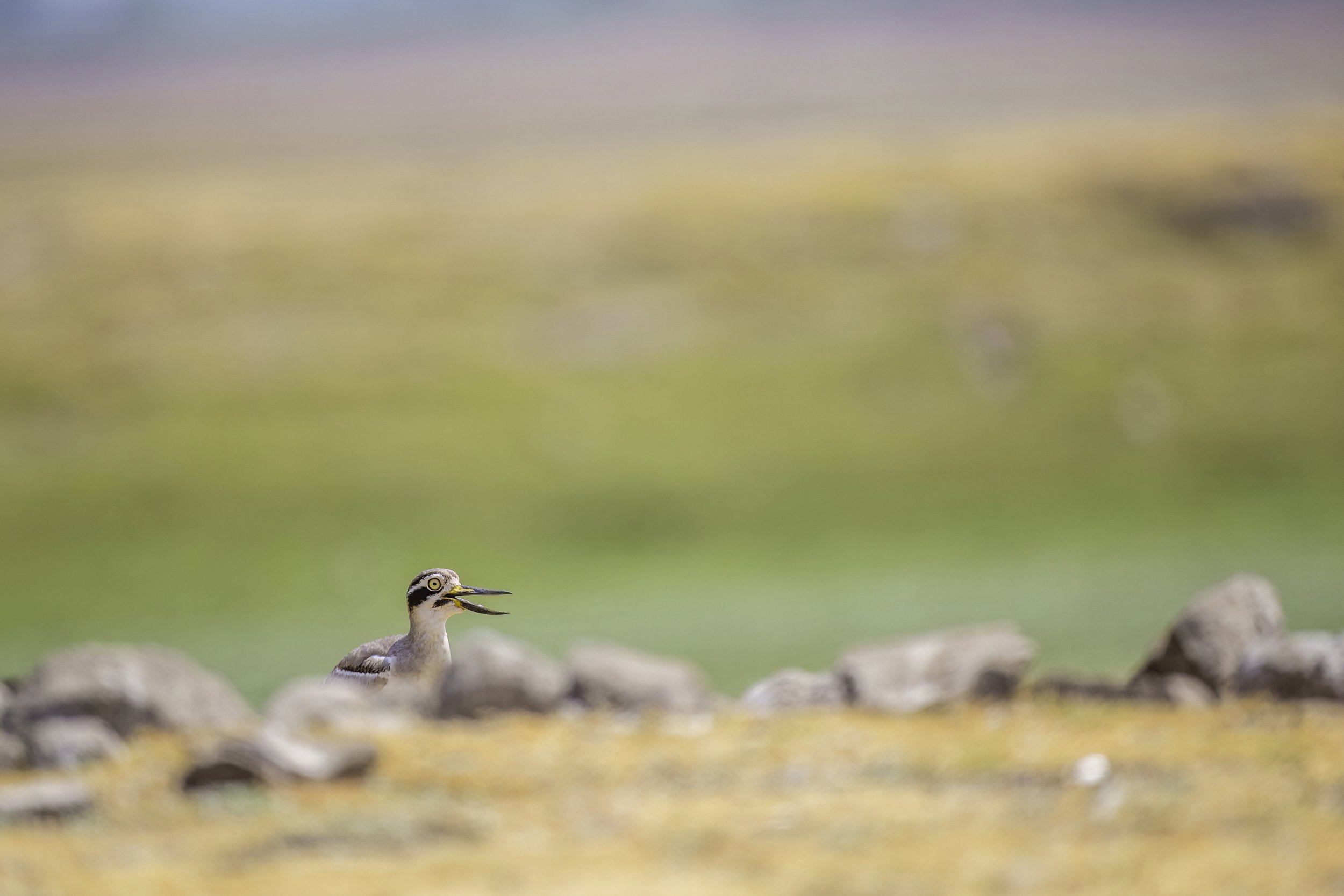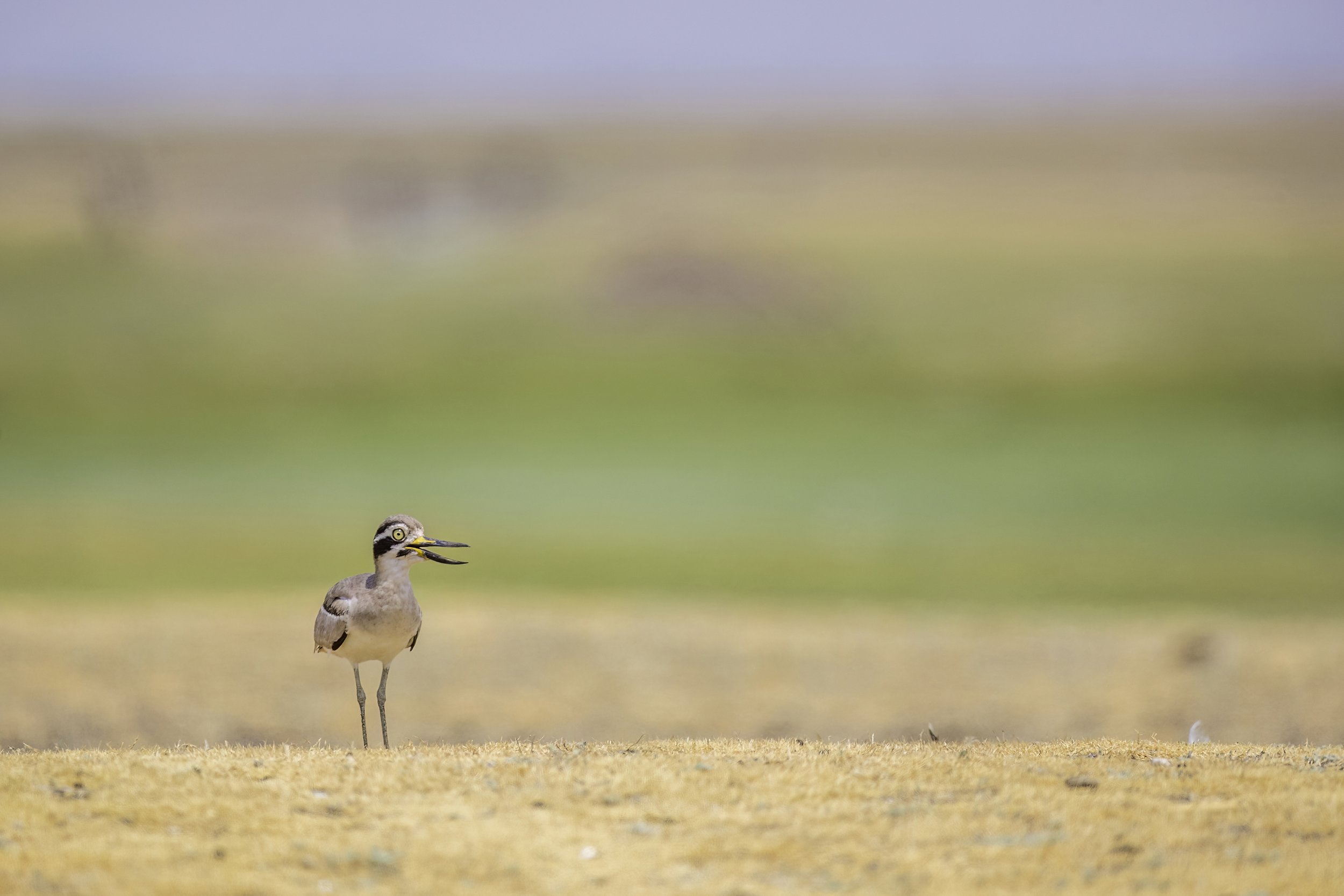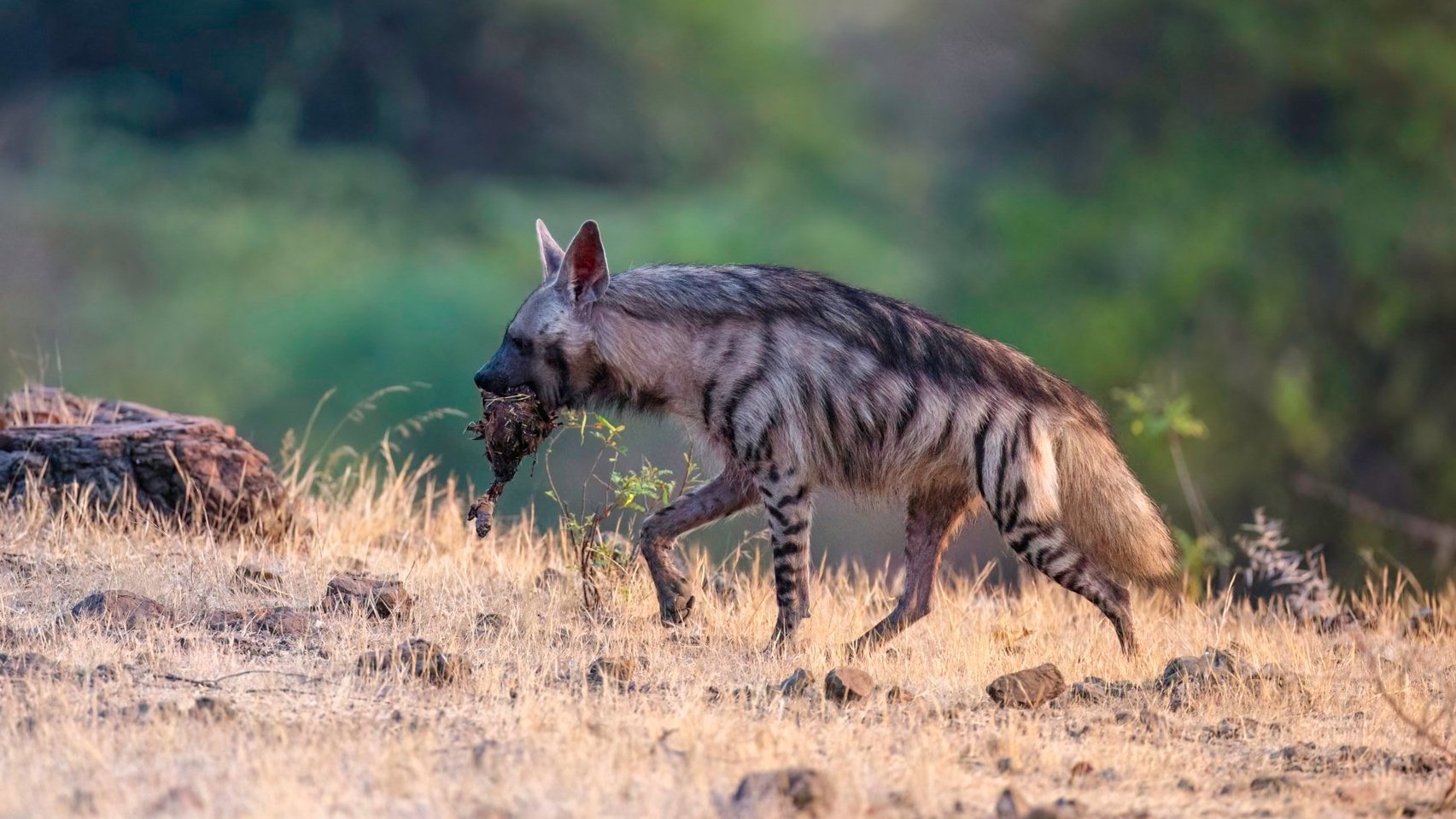Great Stone-curlew/ Great Thick-knee
Esacus recurvirostris
NEAR THREATENED
Bhigwan Bird Sanctuary - Ujni Backwaters, Kumbhargaon
To the south of Bhigwan, bereft of any hills, lie the wide Ujni backwater wetlands. A shallow waste water reserve formed by the discharge of water from the Pune region dams like Panshet, Pawna, Khadakwasla, Varasgaon, Temghar, etc. This semi waste water has created an excellent wetland based ecosystem supporting a large variety of water birds, both endemic and migratory, and also helped with the local agriculture. Nearly 300 species of endemic and migratory birds have been recorded here. The rainfall in the Pune region decides the water level in Ujni dam. Lesser the water, the shallower it is and therefore more birds make it their home in the winter.
Surrounding this lush ecosystem are the rich grasslands and fertile farms home to an impressive list of birds, mammals and reptiles. The area around these backwaters are also unique with rich farmlands and dry deciduous scrub forest with interspersed grasslands. Home to an impressive list of birds, mammals and reptiles they protect many mammals like the Chinkara, Indian Mongoose, Near Threatened Striped Hyena, the Endangered Indian Grey Wolf & Indian Fox and are also popular for grassland birds and the birds of prey, including some magnificent eagles & harriers. My trip this time was focused only a few species like the Striped Hyena, Indian Grey Wolf and Jungle Cat. On our way back from the grasslands Ganesh said there was also this thick-knee accessible at close quarters if one is careful. So we worked out how we would approach and got to the site. With a lot of care I managed to go to ground at a reasonable distance from the thick-knee and as Ganesh drove away the bird ran off for a bit before returning to his position.
From Right: Ganesh, Sandip Nagare & yours truly
But these water birds aren’t the only ones there, there are some magnificent eagles and harriers too like the Endangered Steppe Eagle, the Vulnerable Greater Spotted Eagle, the rare and Vulnerable Eastern Imperial Eagle & the Pallid Harrier, Montagu’s Harrier & Eurasian Marsh Harrier.
Apart from these there are other spectacular species like the Short-eared Owl, Spotted Owlets & the Indian Courser inhabiting the grasslands.
During my time here I was hosted by & had the expert help of Sandip Nagare and his team of knowledgeable guides from the Agnipankha Bird Watcher group, especially Ganesh Bhoi, who went out of their way to ensure I had fantastic opportunities to explore, discover, observe & photograph my target species on this trip like the Near Threatened Striped Hyena. Like earlier, I stayed at Sandip’s homestay and once again had the added pleasure of indulging in delectable home cooked food.
Read about my birds from Kumbhargaon & the Bhigwan Bird Sanctuary here and watch the videos on my Youtube channel - WildArtWorks.
Great Stone-curlew/ Great Thick-knee (Male)
But that was a while back. This time what I saw was very alarming. The summers of the last two years have been harsh and the rains have been scanty leading to extensive evaporation and receding of the waterfront. My friend and local guide, Ganesh, said that the backwaters have receded almost two kilometers from where they used to be. I have here a couple of photographs of what used to be and what it is now. This exposed land is now used for cattle grazing and some degree of farming.

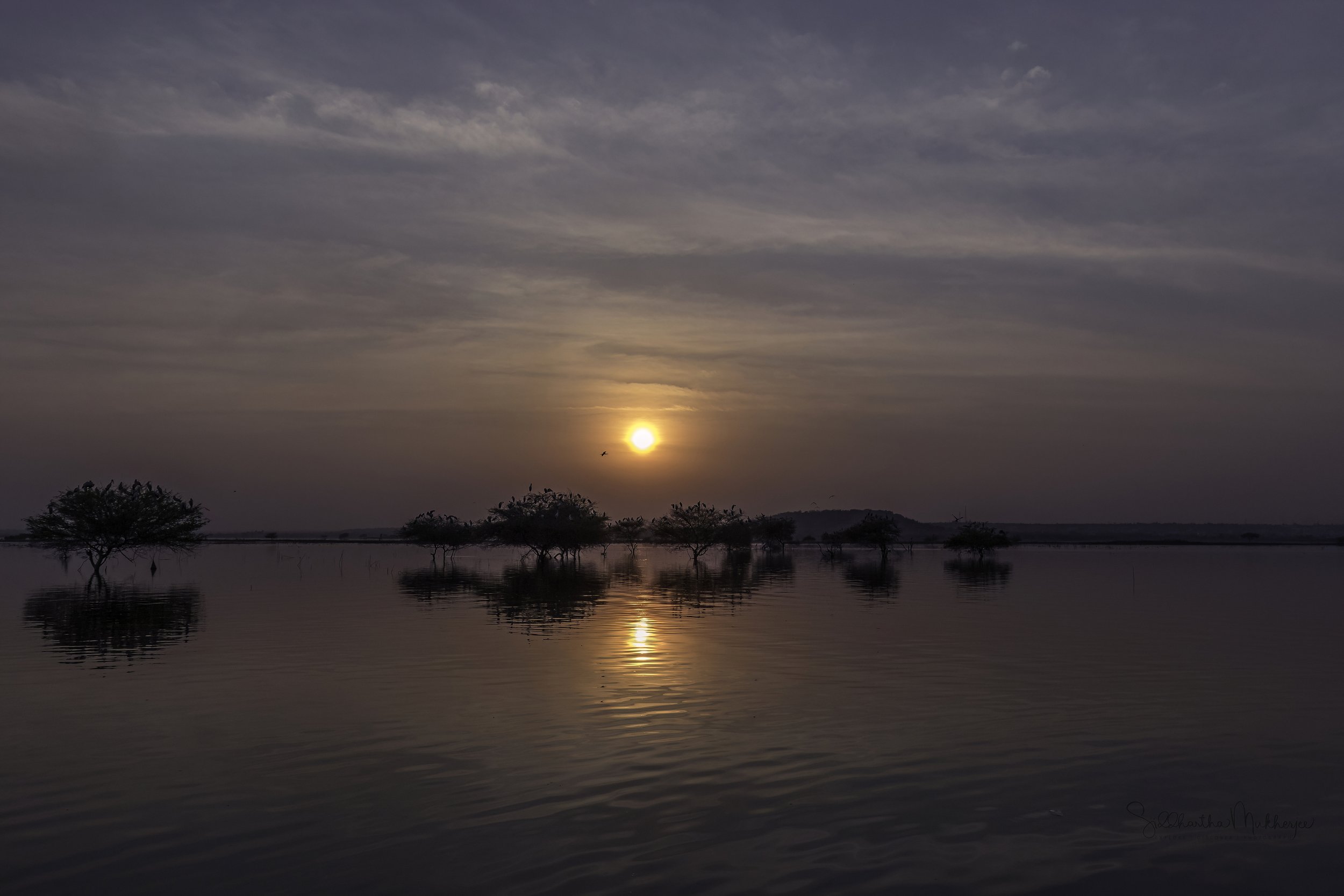

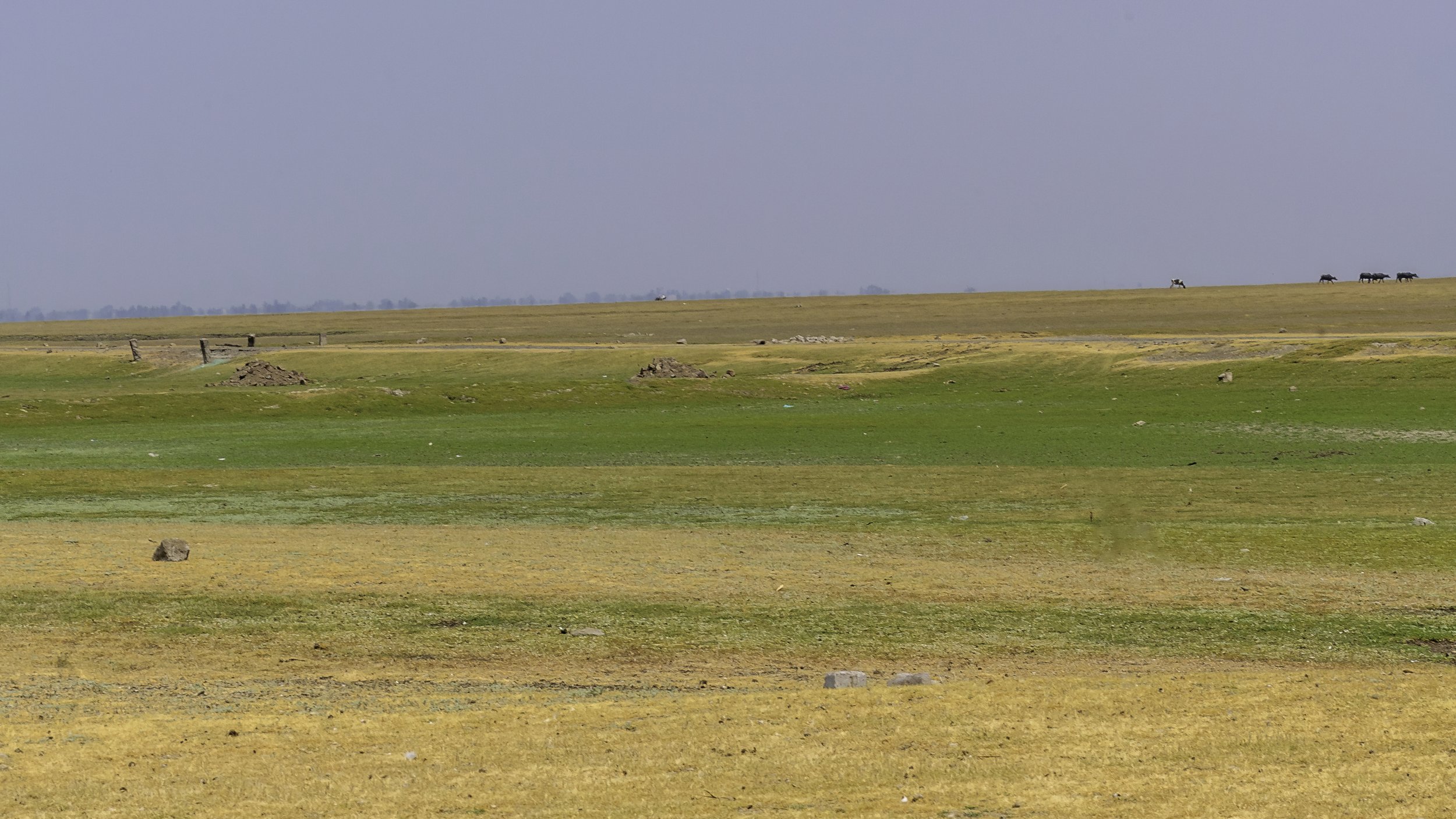
Ujni Backwaters, Bhigwan Bird Sanctuary
The Ujni or Ujjani Dam, also known as Bhima Dam or Bhima Irrigation Project, on the Bhima River, a tributary of the Krishna River, is an earth-fill cum Masonry gravity dam located near the Ujjani village of Madha Taluk in the Solapur district of the state of Maharashtra in India. The Bhima River, which originates in Bhimashankar of the Western Ghats, and forms the Bhima Valley with its tributary rivers and streams, has twenty-two dams built on it of which the Ujjani Dam is the terminal dam on the river and is the largest in the valley that intercepts a catchment area of 14,858 km² (which includes a free catchment of 9,766 km²). The construction of the dam project including the canal system on both banks was started in 1969 at an initial estimated cost of ₹400 million and when completed in June 1980 the cost incurred was of the order of ₹3295.85 million.
The reservoir created by the 185 feet high earth cum concrete gravity dam on the Bhima River has a gross storage capacity of 3.320 km³. The annual utilisation is 2.410 km³. The project provides multipurpose benefits of irrigation, hydroelectric power, drinking, and industrial water supply and fisheries development. The irrigation supplies benefit 500 km² of agricultural land, particularly in the Solapur district. Water supplied from the reservoir to irrigate agricultural areas primarily aims to reduce the incidence of famines and scarcity during drought conditions. The reservoir operation also lessens the threat due to floods to cities such as Pandharpur (an important religious pilgrimage centre for the Hindus). As a result of irrigation facilities, some of the important crops grown under irrigated conditions are sugarcane, wheat, millet and cotton.
This huge reservoir, almost seeming like a sea, is home to hundreds of birds - flamingos with their slender necks, egrets, painted storks, ruddy shelducks and many more. A man-made wetland, these backwaters are a winter sojourn of many migratory birds like the Brown-headed Gulls & Bar-headed Geese making it a mesmerising spectacle. This reservoir is one of the largest backwaters in India created by the Ujni dam. This life giving and sustaining reservoir fulfils multiple purposes - irrigation for agriculture, particularly in the Solapur district, being the primary one - but it also has rural, urban and industrial activities that are equally consuming.
Presently India has 26 sites designated as wetlands of International Importance according to Ramsar Convention. As far as Maharashtra goes, of its multiple natural and man-made reservoirs, none are designated as a Ramsar site. But according to Ramsar’s important identification criteria of population of migratory birds, the Ujni backwaters are amongst the six important wetlands of Maharashtra hosting around 250 species of migratory and resident birds ranging from the pied kingfisher, northern shoveler, bar-headed geese, great egret, painted stork, Indian cormorant, Eurasian coot, common moorhen, black-headed ibis, Asian open-bill, the list is pretty long.
With such a blessed habitat harbouring many species of flora and fauna, this wetland has tremendous benefits to the villages around it. Sufficient water for agriculture, livelihoods to many through fishing and tourism, flood control and shoreline stability are some of the aspects this wetland caters to. Though created strategically for economic development, today, the value of these wetlands function far beyond the scope of any instrument of economic growth.
But the modern day demands on this resource are tremendous. Cash crops requiring huge irrigation, unmonitored use of pesticides, untreated and excessive sewage and industrial waste disposals, uncontrolled urban growth and the changing mindsets of people for newer lifestyles are slowly and steadily affecting this huge wetland. Decline in the fish density in the major tributaries of River Krishna, increase in exotic weed species in water are some of the indicators of quality degradation of the wetland recorded by researchers. This isn’t the only threat to this spectacular habitat and its wildlife but it also has long term adverse effects on the present and future human population who are consumers of this wetland in the various ways they utilise it.
The conservation of such a large reservoir isn’t a simple task. It requires judicious water usage for local, agricultural and industrial purposes, advocating advanced irrigation technologies to avoid and minimise wastage and banning diversions of water for non-priority purposes can be some of the large-scale measures possible with equal participation of the Government and people alike. Conservation awareness among the local communities for wetlands and its flora-fauna can help in a long run.
On a smaller scale the villagers are doing their bit by consciously avoiding plastic litter, controlled fishing and adopting rowing instead of engines for tourist boats wherever possible. These are some of their simple but effective ways to stop draining these life giving wetlands.
Great Stone-curlew/ Great Thick-knee
The stone-curlews, also known as dikkops or thick-knees, consist of 10 species within the family Burhinidae, and are found throughout the tropical and temperate parts of the world, with two or more species occurring in some areas of Africa, Asia, and Australia. Despite the group being classified as waders, most species have a preference for arid or semiarid habitats.
The family Burhinidae was introduced in 1912 for the stone-curlews by Australian ornithologist Gregory Mathews. The family contains three genera: Hesperoburhinus, Burhinus and Esacus. The name Burhinus combines the Ancient Greek bous meaning "ox" and rhis, rhinos meaning "nose" (or "bill"). Molecular phylogenetic studies have shown that the family Burhinidae is sister to a clade containing the sheathbills in the family Chionidae and the Magellanic plover in its own family Pluvianellidae. The stone-curlews are not closely related to the curlews, genus Numenius, that belong to the sandpiper family Scolopacidae. They are medium to large birds with strong black or yellow black bills, large yellow eyes—which give them a reptilian appearance—and cryptic plumage. The names thick-knee and stone-curlew are both in common use. The term stone-curlew owes its origin to the broad similarities with true curlews. Thick-knee refers to the prominent joints in the long yellow or greenish legs and apparently originated with a name coined in 1776 for B. oedicnemus, the Eurasian stone-curlew. Obviously the heel (ankle) and the knee are confused here.
They are largely nocturnal, particularly when singing their loud, wailing songs, which are reminiscent of true curlews. Their diet consists mainly of insects and other invertebrates. Larger species also take lizards and even small mammals. Most species are sedentary, but the Eurasian stone-curlew is a summer migrant in the temperate European part of its range, wintering in Africa. A fossil genus Wilaru, described from the Late Oligocene to the Early Miocene of Australia, was originally classified as a stone-curlew, but was subsequently argued to be a member of the extinct anseriform family Presbyornithidae, instead. The living species are:
Double-striped Thick-knee (Hesperoburhinus bistriatus)
Peruvian Thick-knee (Hesperoburhinus superciliaris)
Eurasian Stone-curlew (Burhinus oedicnemus)
Indian Stone-curlew (Burhinus indicus)
Senegal Thick-knee (Burhinus senegalensis)
Water Thick-knee (Burhinus vermiculatus)
Spotted Thick-knee (Burhinus capensis)
Bush Stone-curlew (Burhinus grallarius (formerly B. magnirostris, the bush thick-knee))
Great Stone-curlew (Esacus recurvirostris)
Beach Stone-curlew (Esacus magnirostris)
Our interest today is the Near Threatened Great Stone-Curlew or Great Thick-knee (Esacus recurvirostris), a large wader and a resident breeder in tropical southern Asia from India, Pakistan, Sri Lanka, Bangladesh into South-east Asia. Apparently the scientific name of the genus Burhinus comes from the words ox and nose, having nothing to do with knees, so should they be Eurasian Ox-noses instead? Probably not, I mean I can understand thick-knee, but ox-nose? The resemblance of the these bird's bills to an ox's nose is not obvious to me. The name thick-knee actually comes from the specific name of this bird oedicnemus meaning just that, thick-knee, so it seems strange that this name stuck across the world and they are not all called stone-curlews, oh well, whoever said naming birds was straightforward? So what of the name Dikkop then? This is Afrikaans for thick-head, not sure if this refers to the structure of the head or that they are a bit dim, like dotterel. Either way it is a name that is falling from use recently, people preferring to lump them all as thick-knees, perhaps political correctness is creeping in and no-one wants to offend the poor birds.
Anyway, I have elected to call them what I have always known them as, but whatever you want to call them they are great looking birds, made all the more intriguing by their semi nocturnal habits. They look superficially like bustards and have in the past been considered closely related to them.
The great stone-curlew was formally described in 1829 by the French naturalist Georges Cuvier and given the binomial name Oedicnemus recurvirostris. The specific epithet recurvirostris combines Latin recurvis meaning "bent backwards" with -rostris meaning "-billed". The species is now placed in the genus Esacus that was introduced in 1831 to accommodate the great stone-curlew by the French naturalist René Lesson. The species is monotypic: no subspecies are recognised.
The great thick-knee is a large wader at 49–55 cm, and has a massive 7 cm bill with the lower mandible with a sharp angle giving it an upturned appearance. It has unstreaked grey-brown upperparts and breast, with rest of the underparts whitish. The face has a striking black and white pattern, and the bill is black with a yellow base. The eyes are bright yellow and the legs a duller greenish-yellow. In flight, the great thick-knee shows black and white flight feathers on the upperwing, and a mainly white underwing. Sexes are similar, but young birds are slightly paler than adults.
This species prefers gravel banks along rivers or large lakes, and also beaches. It is mainly nocturnal or crepuscular like other stone-curlews, but can frequently be seen foraging during the day, moving slowly and deliberately, with occasional short runs. It tends to be wary and flies off into the distance ahead of the observer, employing powerful, rather stiff wingbeats. The call is a wailing whistle, given mainly at night, as with other birds in this family. The great thick-knee eats crabs, large insects, and other animal prey. A single egg is laid in a bare scrape on the open shingle.
Great Thick-knee Esacus recurvirostris has most recently been assessed for The IUCN Red List of Threatened Species in 2017. Esacus recurvirostris is listed as Near Threatened under criteria A3cd. This species is listed as Near Threatened on the basis that it is expected to undergo a moderately rapid population decline over the next three generations owing to human pressures on riverine ecosystems, including the construction of dams. It has already undergone precipitous declines in South-East Asia but its status currently appears more secure in India.
Related Posts











